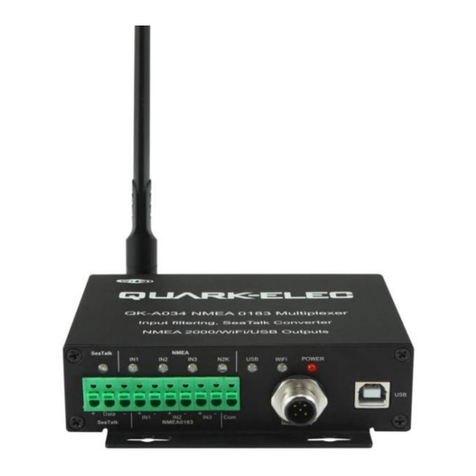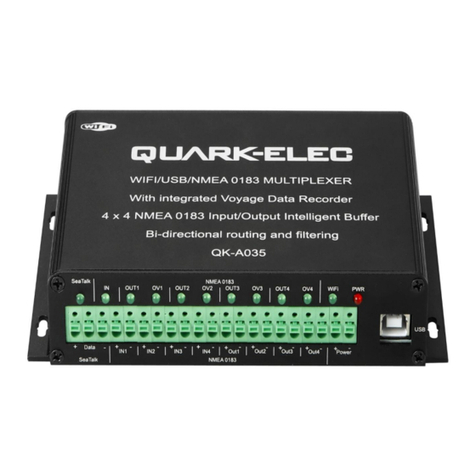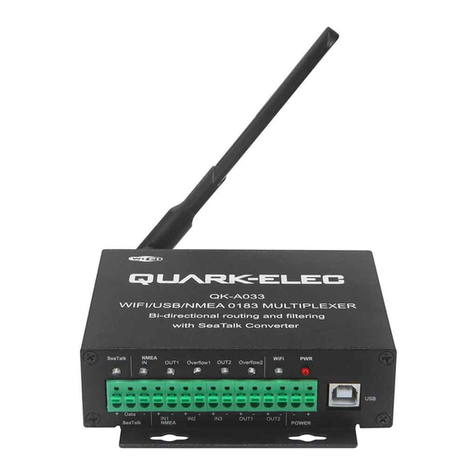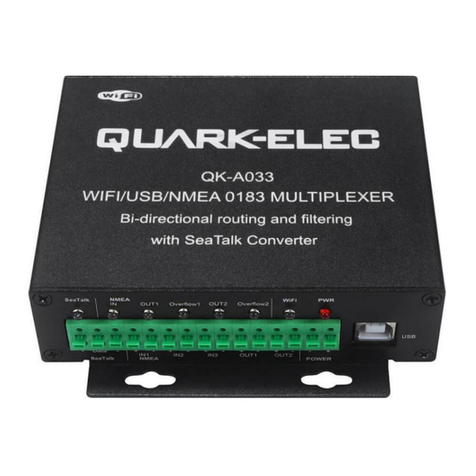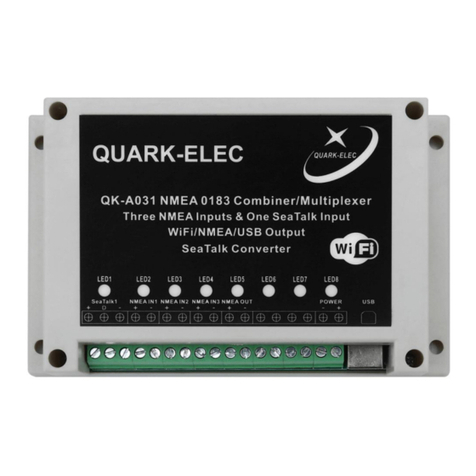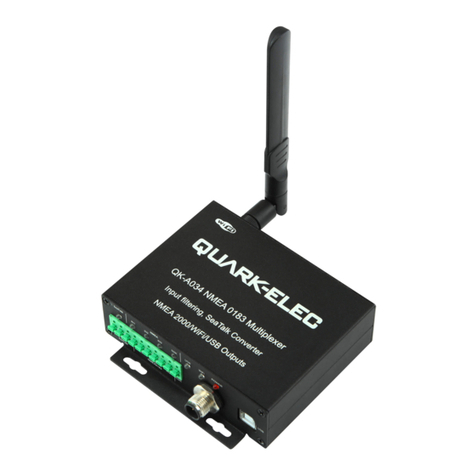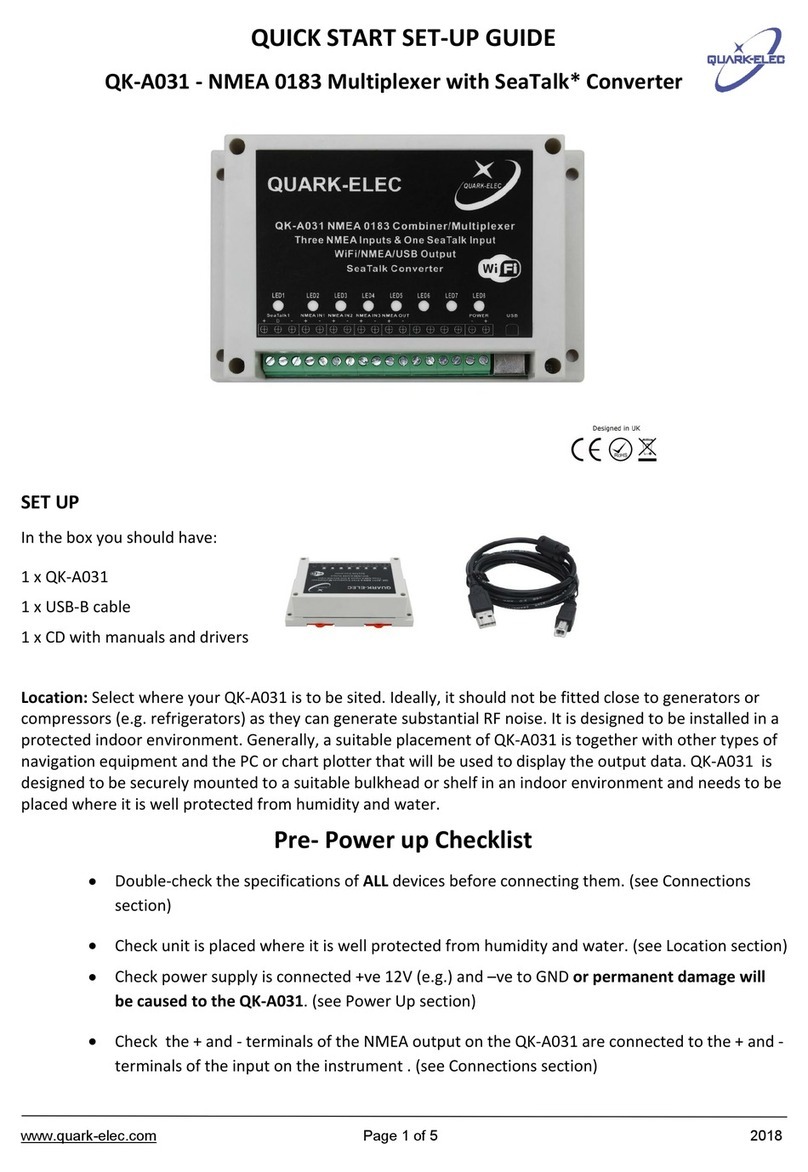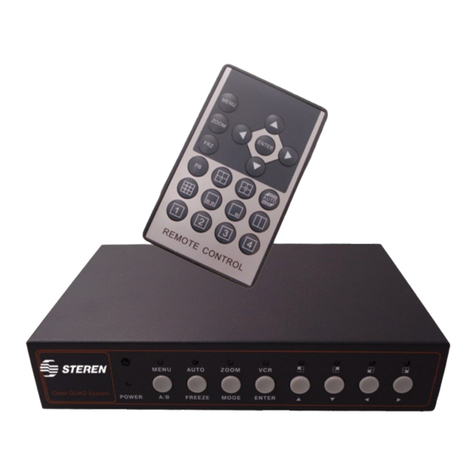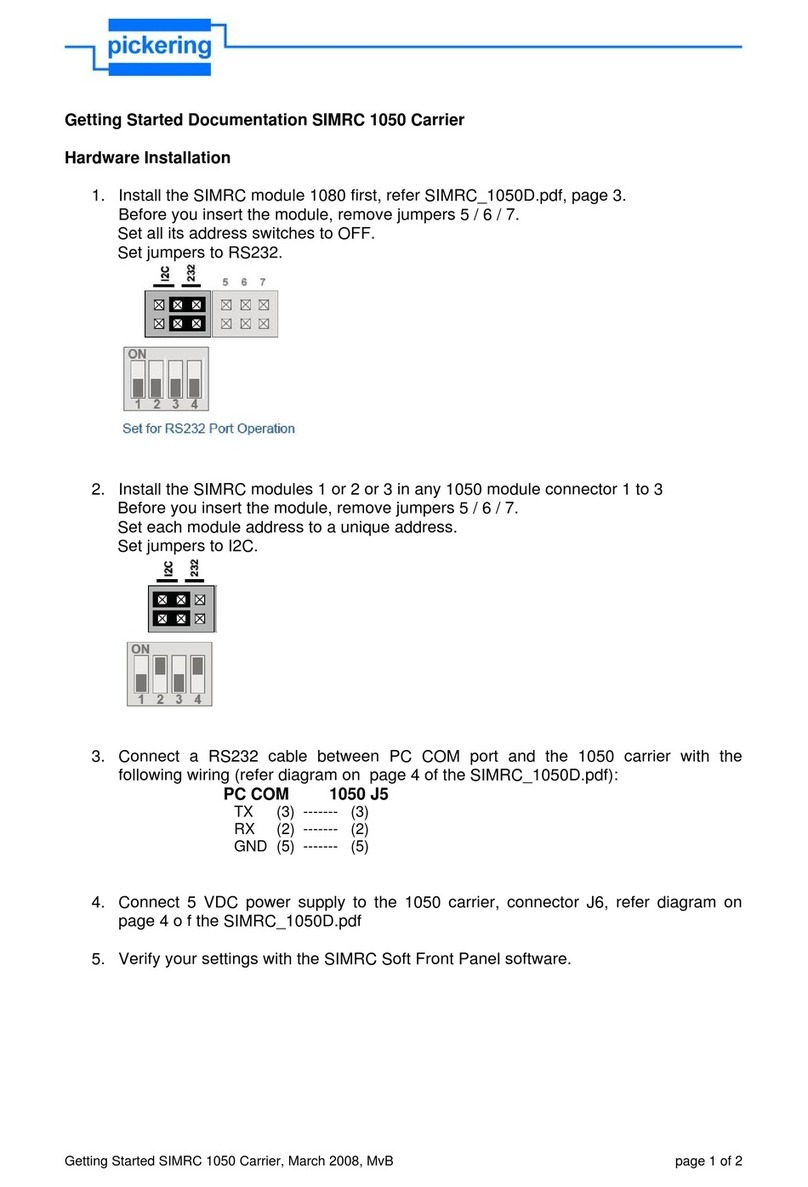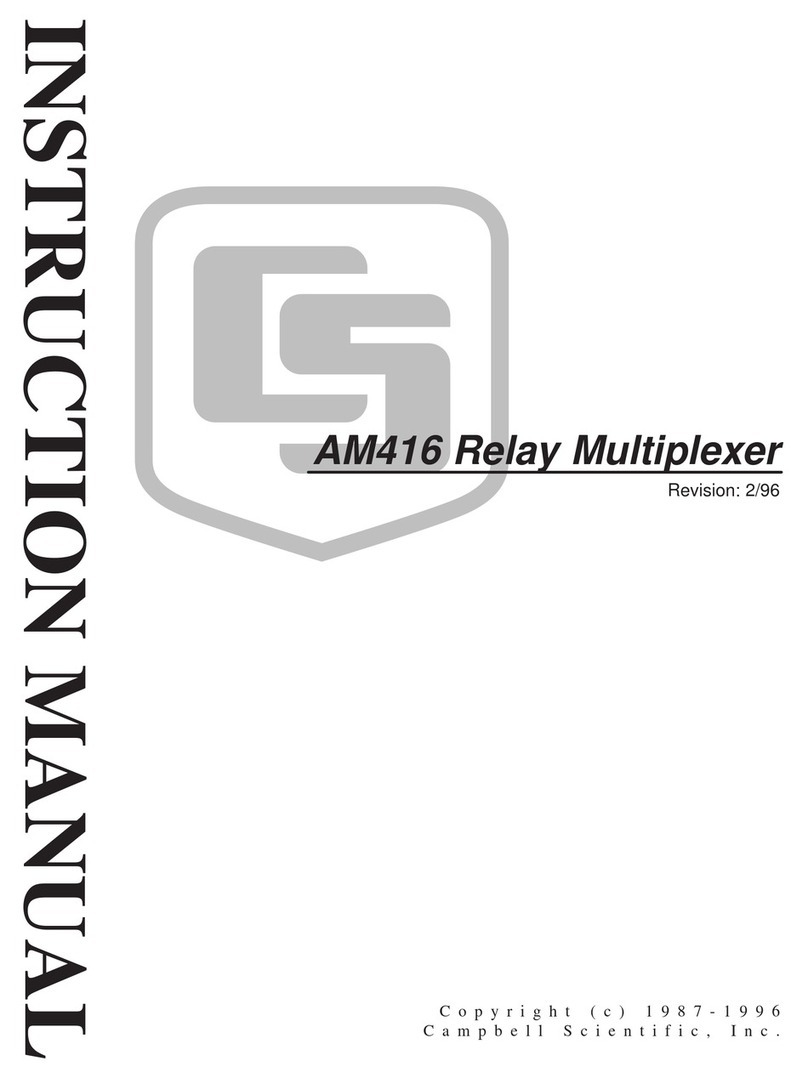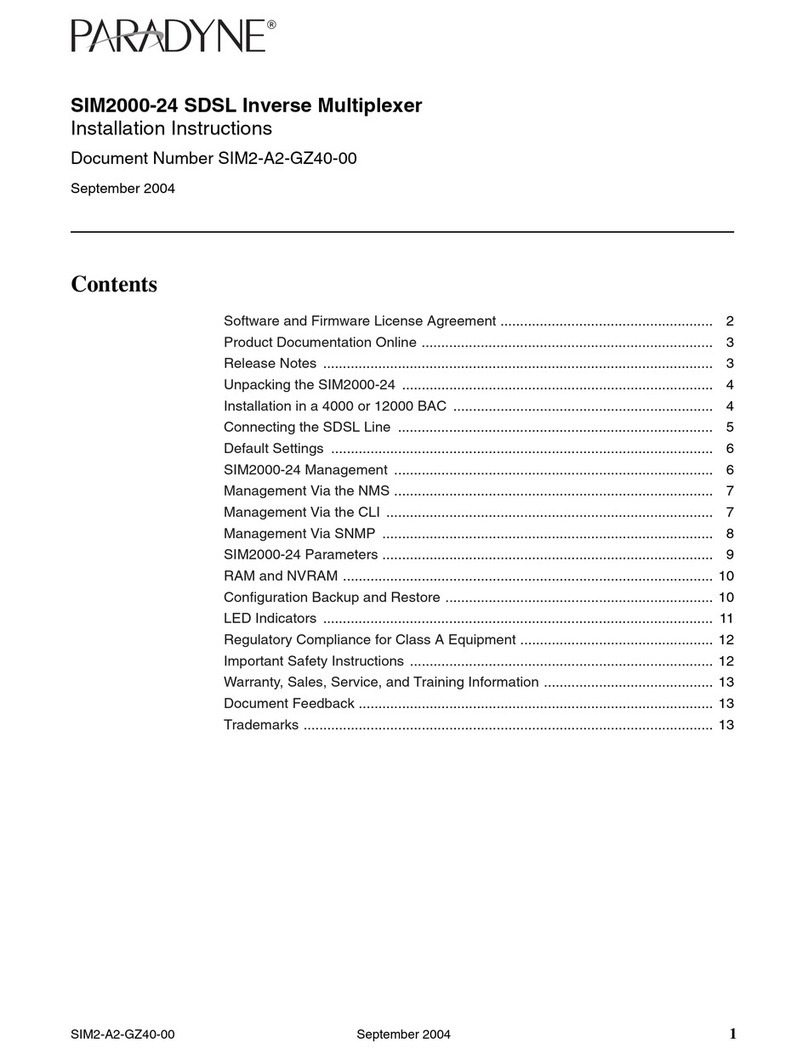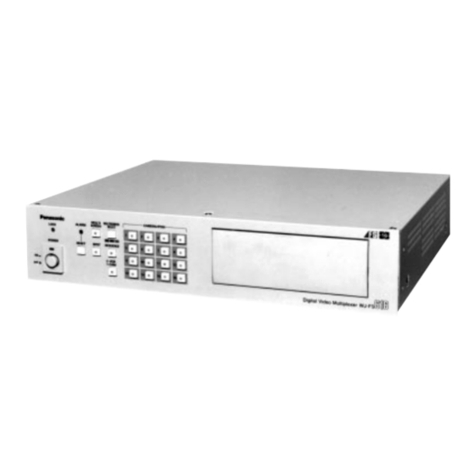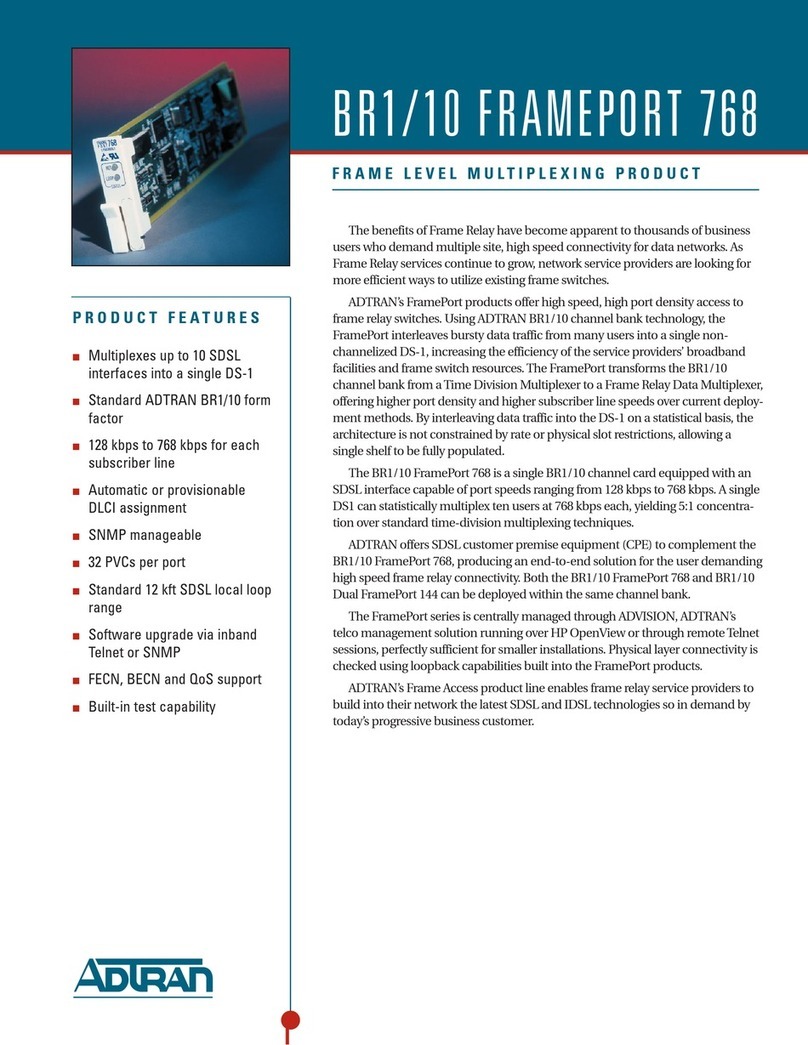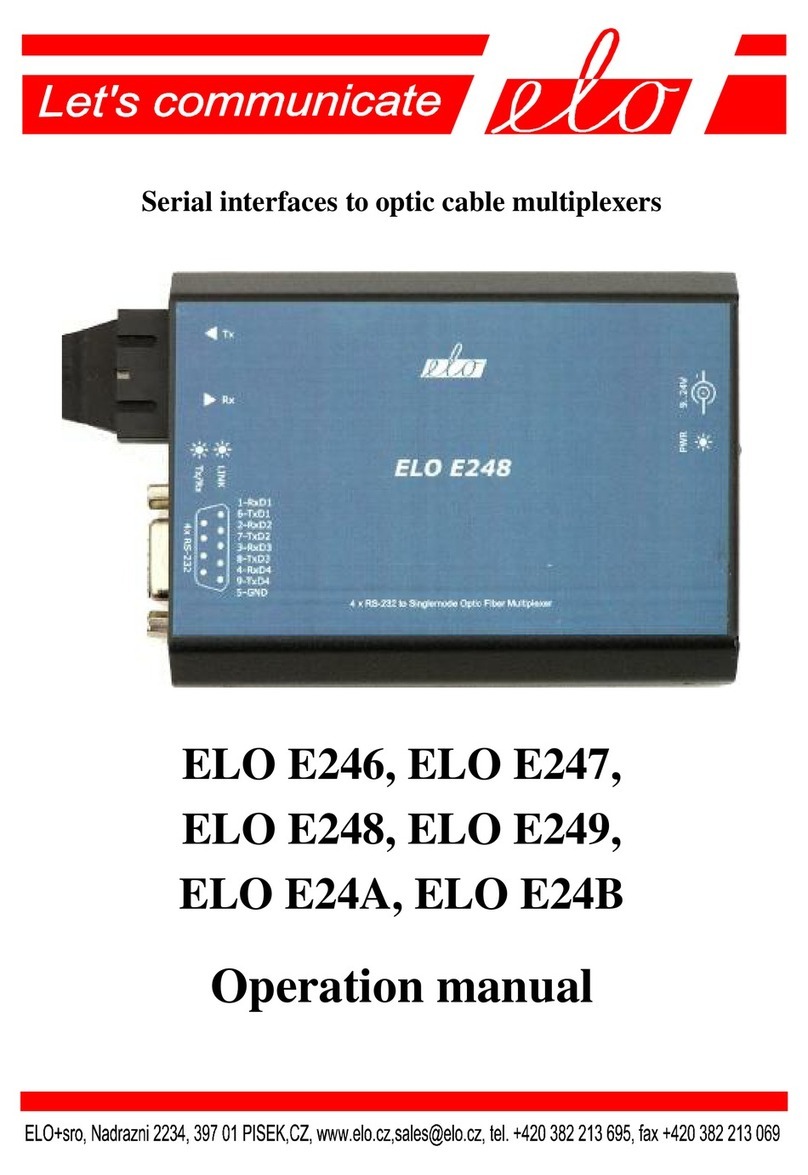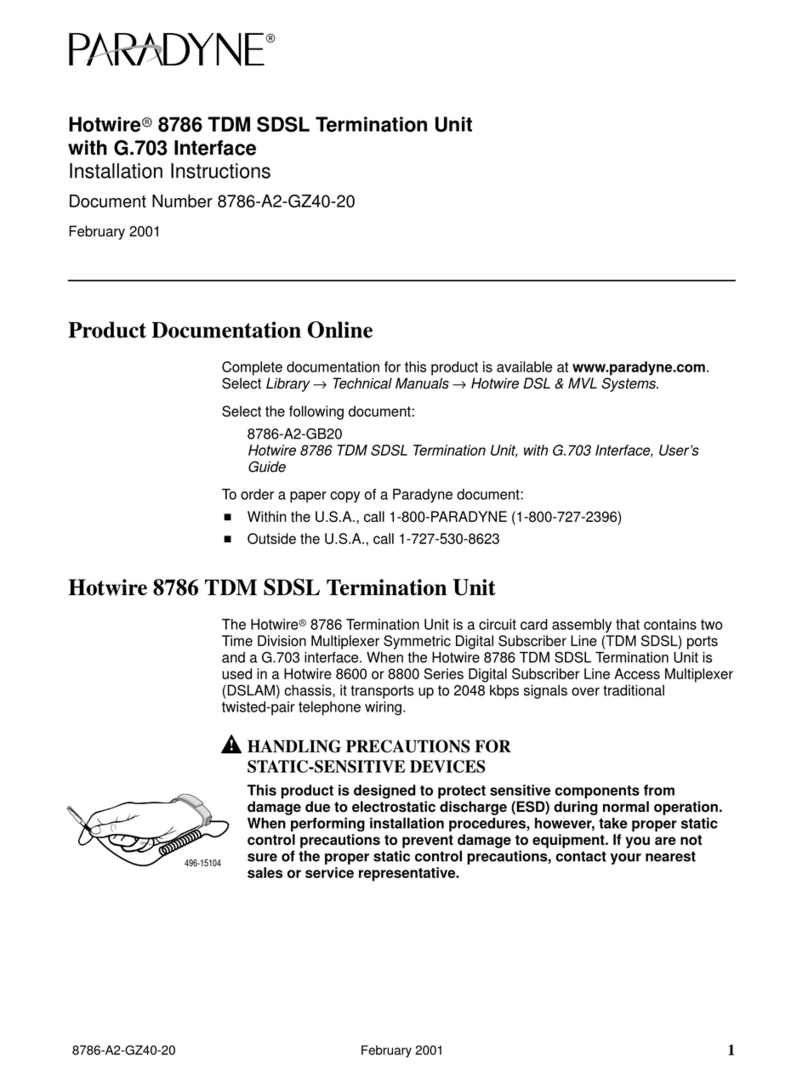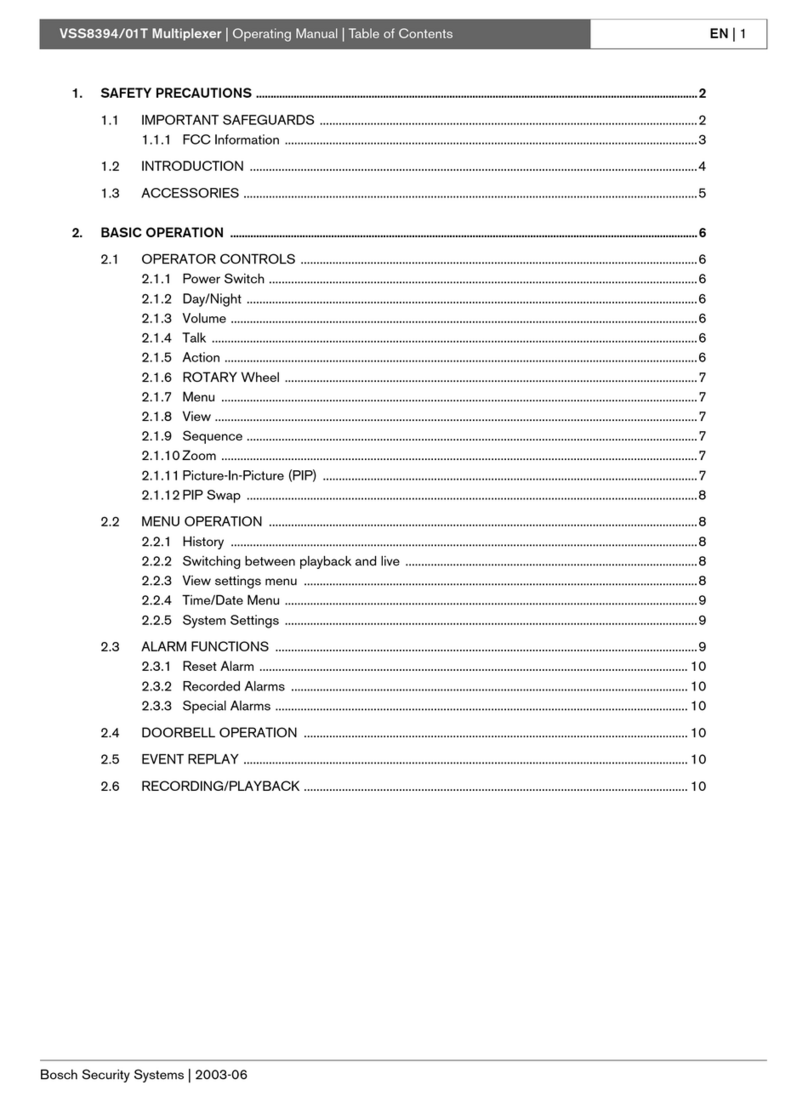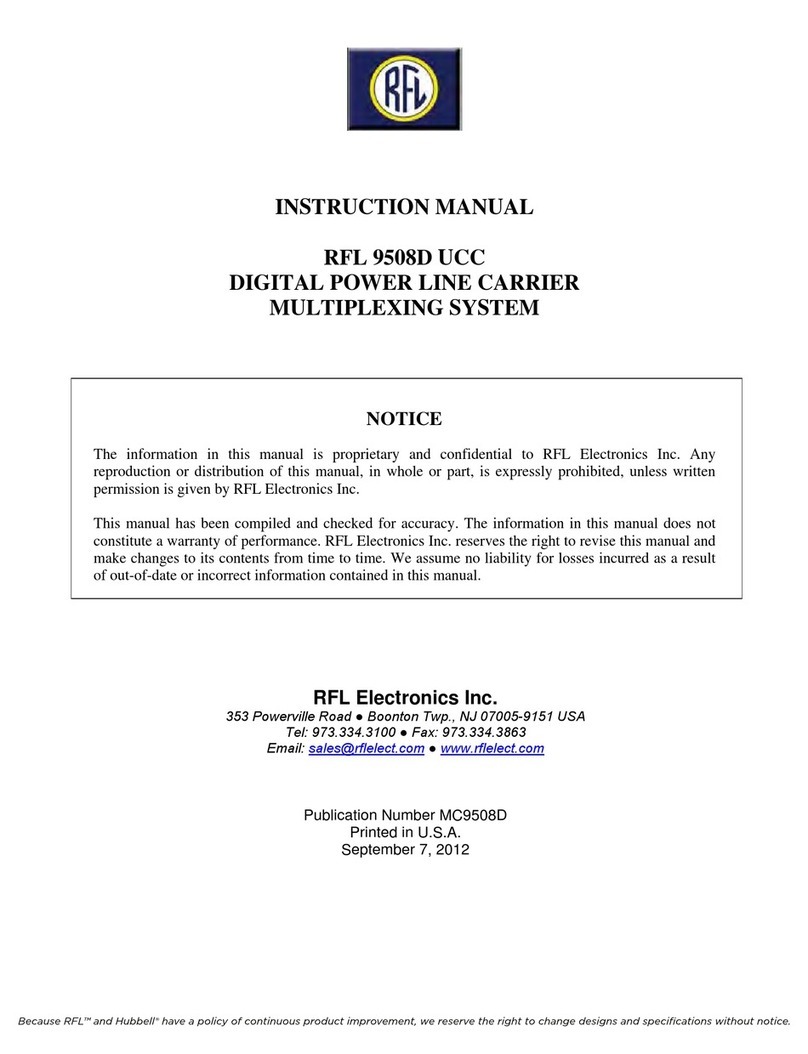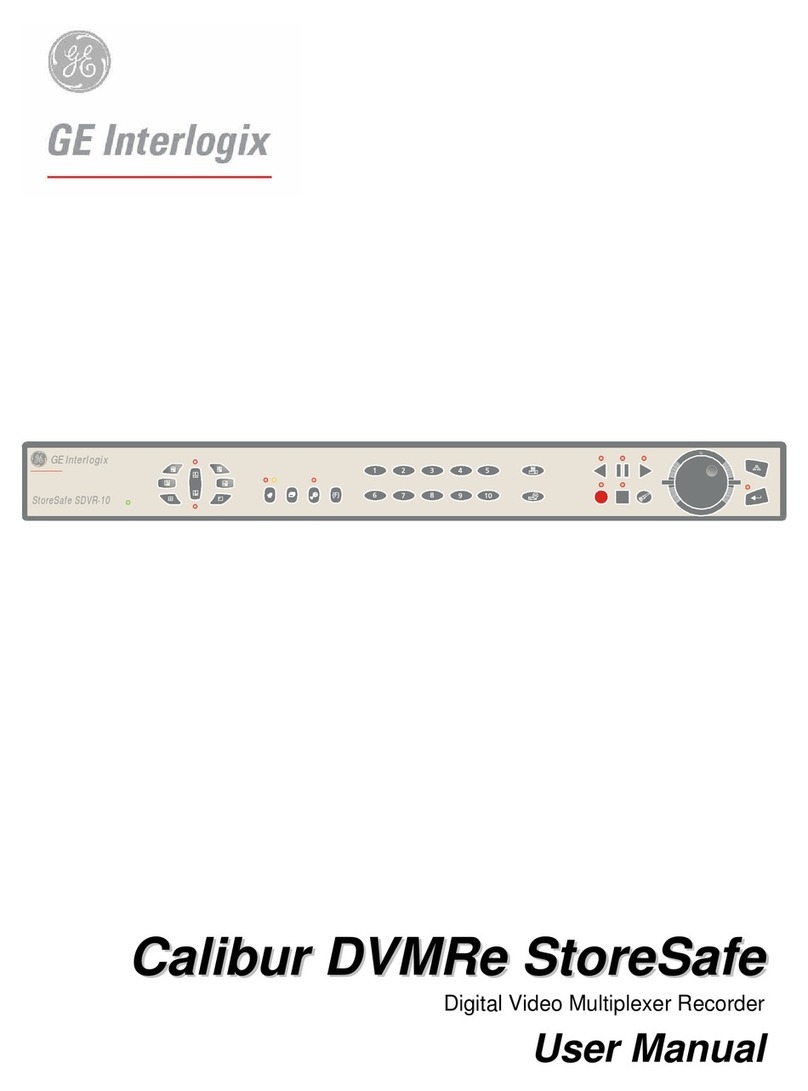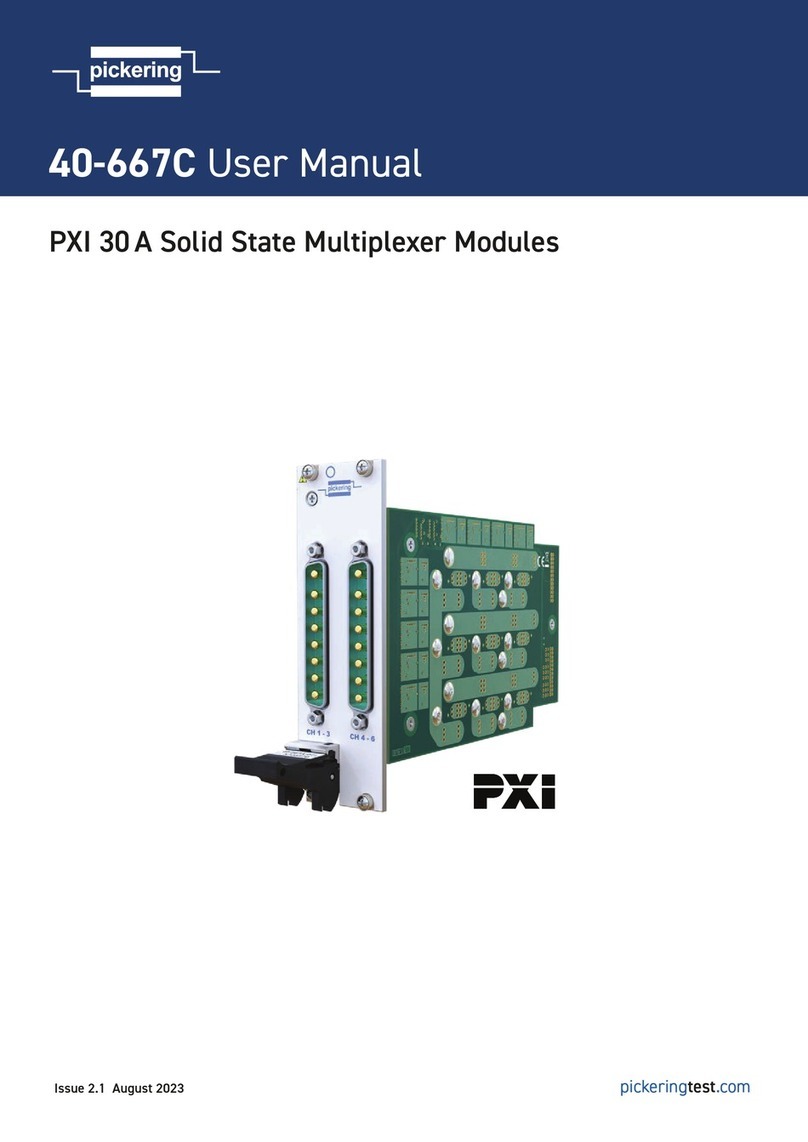QK-A035 Manual
V 1.0 3 of 19 2021
7. Specification......................................................................................................................................18
8. Limited warranty and notices............................................................................................................18
9. Glossary............................................................................................................................................19
1.Introduction
The QK-A035 is a sophisticated 4x4 NMEA 0183, Seatalk¹, WiFi and USB multiplexer with an integrated
voyage data recorder (VDR).
Through advanced filtering and routing, the A035 NMEA enables controlled routing of data to specific
outputs, blocking of excess data and overflow reduction.
The A035 is capable of recording the messages transmitted from every input device. All messages are
stored within an integrated SD card. The stored data can be accessed by using an SD card reader (not
included). Using an SD card with 32GB storage space (expandable), the A035 can store up to an
average of 12 weeks’ worth of vessel data. Users won’t have to worry about losing the most recent data
since A035 uses a circular buffer where the oldest data is overwritten only when memory is full.
Similar to most Quark-elec products, the A035 can be used straight out of the box with the standard
factory settings or can be configured for customized use.
Default standard functionality: The multiplexer combines up to 4 NMEA 0183 inputs and one Seatalk1
device. All these messages are then sent to 4 NMEA 0183 outputs, USB and WiFi interface.
•Bi-directional WiFi: With 2-way WiFi connectivity, the A035 allows for wireless connection to
autopilots and other NMEA devices if desired. Data from instruments is available wirelessly
though WiFi connections, giving complete freedom to navigate, monitor and control from
anywhere on board. Up to 4 connections from iPads, iPhone, Android phones and tablets or
other WiFi enabled devices can connect directly to the A035 with no need for a WiFi access
point. (Though it can also be connected to an access point/router if desired (see WiFi section).
•Bi-directional USB: The USB port also supports bi-directional communication. It allows
computer-based, navigation applications to send sentences through the multiplexer to control
an autopilot and other devices. The USB port is also used for configuration of specific WiFi and
NMEA port settings.
•Records all inputs devices’ activity for vessel tracking and performance analysis or any
diagnostic work accordingly (SD card needs to be fitted).
Additional configurable functionality (through Windows software via USB):
•Routing options: The powerful routing feature allows the NMEA, SeaTalk¹, USB and WiFi
input data to be routed from any input to specific outputs.
•Filtering options: Each input also has a flexible filter that can be configured to pass or block
specific sentences. This frees up bandwidth, significantly reducing the possibility of data
overflow and resulting in the loss of data.
•Additional WiFi options: including connection to an access point to share marine data across
your entire WiFi network or connect the A035 to the Internet. WiFi can be disabled if desired.
•VDR date saving frequency type: This allows users to choose a preferred saving frequency to
match with the most suitable situation. The default setting is leisurely. In a typical situation on
the sea or near the beach, this setting allows the A035 to save the data every 30 to 45 mins
(depending on how many devices are connected to the inputs and the input data update rate.
Heavy data leads to quicker saving frequency). With the rapid option, the saving frequency will
be 10 times quicker compared to the same situation as leisurely. Don’t use the rapid option if
you have heavy input data flow (for example, 10hz updated instruments), as the very quick
